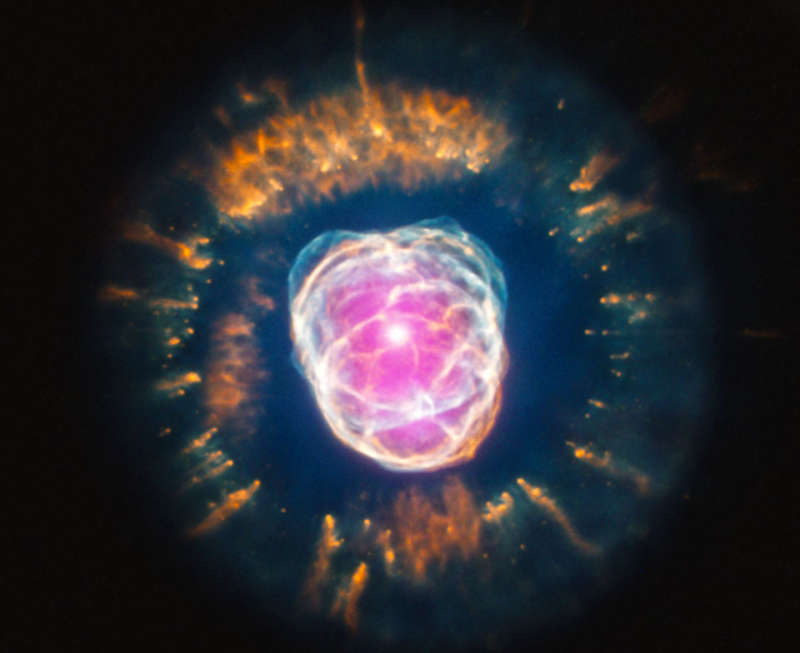The Eskimo Nebula from Hubble and Chandra

Explanation:
In 1787, astronomer
William Herschel discovered
the
Eskimo Nebula.
From the ground, NGC 2392 resembles a person's head
surrounded by a
parka hood.
In 2000, the
Hubble Space Telescope imaged the
Eskimo Nebula in visible light, while the nebula was
imaged in X-rays
by the
Chandra X-ray Observatory
in 2007.
The
above combined visible-X
ray image, with X-rays emitted by central hot gas and shown in pink, was released
last week.
From space, the
nebula displays gas clouds so complex they are
not fully understood.
The
Eskimo Nebula
is clearly a
planetary nebula, and the gas seen above composed the
outer layers of a
Sun-like star only 10,000 years ago.
The inner filaments
visible above are being ejected by strong
wind of particles from the central star.
The outer disk contains unusual
light-year long orange filaments.
The
Eskimo
Nebula spans about 1/3 of a light year and lies in our
Milky Way Galaxy,
about 3,000 light years distant, toward the constellation of the Twins
(
Gemini).
Authors & editors:
Robert Nemiroff
(MTU) &
Jerry Bonnell
(USRA)
NASA Web Site Statements, Warnings,
and Disclaimers
NASA Official: Jay Norris.
Specific
rights apply.
A service of:
LHEA at
NASA /
GSFC
& Michigan Tech. U.

